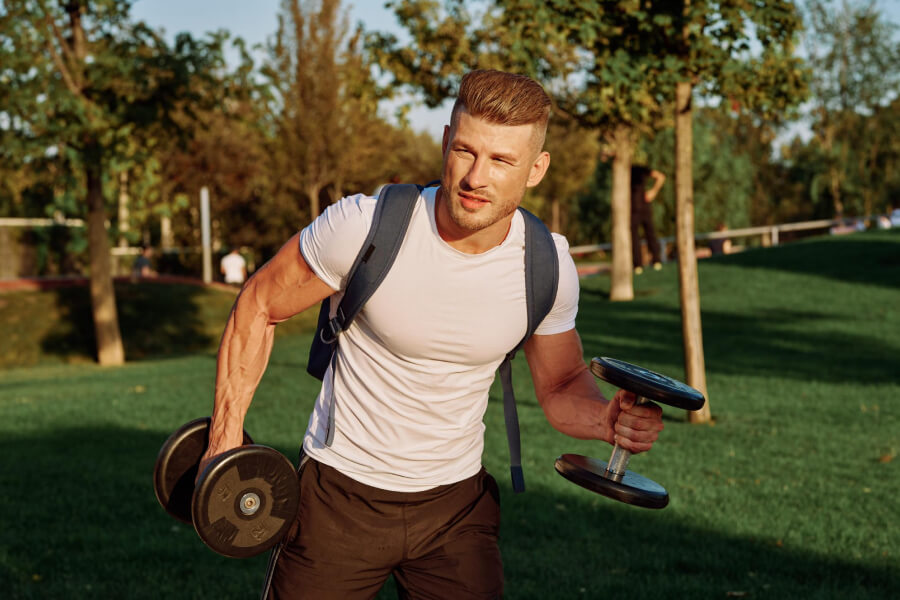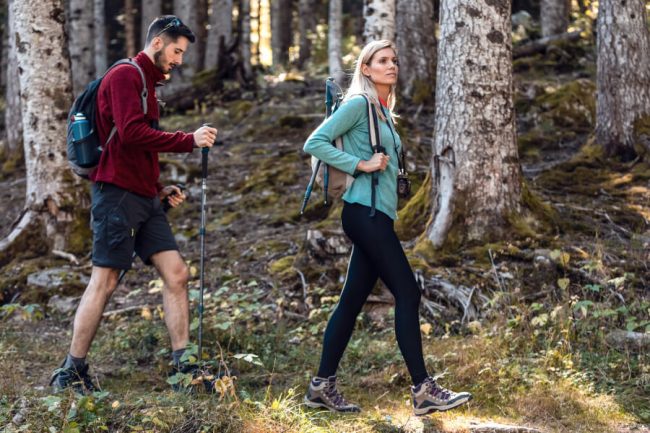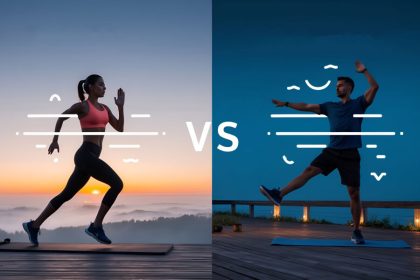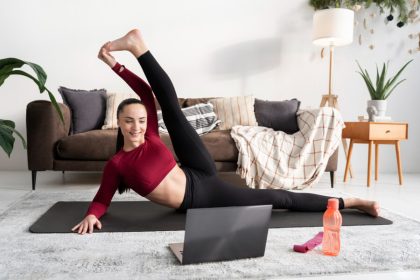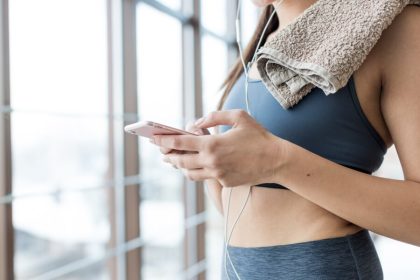If you’re looking for a way to blend cardio, strength training, and a rush of adventure into a single, sustainable workout, rucking might just be for you.
This emerging fitness trend is more than a simple hike; it combines walking or hiking with the added challenge of carrying weight.
Rucking for fitness can be done by people of all fitness levels, is accessible and affordable, and doesn’t require gym memberships or special equipment.
But what makes rucking for fitness unique and covers everything from its health benefits to how to get started? Let’s see!
What Is Rucking
Rucking is simply walking or hiking with a weighted backpack (often called a “ruck”). Originating in the military, rucking for fitness was used to build resistance and strength as soldiers carried heavy packs over long distances.
Now, people are adapting rucking for fitness in civilian life as a simple, effective workout that combines aerobic exercise and resistance training.
Rucking is accessible to almost everyone; you can adjust the weight, pace, and distance to match your fitness level and goals. Plus, you can ruck anywhere from a local park to city streets or mountain trails.
What You Need to Know About Rucking
Getting started with rucking for fitness is simple. Here’s a quick overview of the essentials:
- Find a sturdy backpack: You don’t need a fancy pack; a comfortable backpack with padded shoulder straps works well.
- Choose your weight: Start with a manageable weight, such as 5-10 kg, and gradually increase as you get stronger.
- Find your route: You can ruck on any walking path. Begin with flat terrain and move to hills for an added challenge.
- Wear supportive footwear: Hiking boots or strong walking shoes will provide the support you need.
4 Health Benefits of Rucking
Rucking for fitness provides a range of health benefits. Let’s take a look at four top benefits:
Enhanced Calorie Burn
Walking with weight boosts calorie loss by engaging more muscles and requiring extra effort to carry the load.
A person can burn up to 300-500 calories per hour while rucking, depending on weight and speed. This makes rucking for fitness an excellent choice for those looking to lose weight sustainably.
Increased Strength
The weighted backpack adds resistance, helping to strengthen muscles in the legs, core, and upper body.
Over time, rucking for fitness can improve your overall strength, especially if you gradually increase the load in your backpack.
Better Cardiovascular Health
Rucking is an effective cardiovascular workout. As you walk with the extra weight, your heart rate increases, which can lead to improved heart health and resistance. Plus, rucking for fitness is low-impact, so it’s easier on the joints than running.
Stronger Bones
The added weight in rucking provides gentle stress to bones, which can help to improve bone density. This makes rucking for fitness particularly beneficial for older adults, as it helps prevent bone-related issues like osteoporosis.
How Many Calories Does Rucking Burn
Calorie burn depends on weight, speed, and terrain. In general, a 70 kg person carrying a 10 kg ruck can burn about 300 calories per hour on flat terrain, and up to 500 calories on rougher terrain or with a heavier load. Tracking your burn rate can help you adjust your rucking for fitness goals.
Should Rucking Replace Your Regular Walks
Rucking can be a great addition to your fitness routine, adding strength-building benefits to your walks. However, alternating between rucking and regular walking allows for muscle recovery and reduces the risk of overuse injuries.
Rucking and the SUPERMEDIUM Build
One popular aspect of rucking for fitness is its connection to the “super medium” build balancing strength and resistance without aiming for excessive bulk.
Many enthusiasts find that rucking for fitness helps them achieve a balanced, fit physique that combines athletic performance with everyday functionality.
Should Women Ruck
Absolutely! Rucking for fitness is perfect for women who want to build strength and resistance without hitting the weight room. Here’s why:
- It’s weight training for people who don’t like the gym: Rucking combines cardio and resistance training, perfect for women who want to build strength in a natural setting.
- Rucking strengthens bones: This weight-bearing exercise is great for women, particularly in supporting bone health.
- Women are great at carrying weight: Many women find they have the stamina for rucking and enjoy the empowerment that comes from carrying weight over longer distances.
What About Injuries
Injuries from rucking for fitness are rare, especially if you start with a light weight and gradually increase. However, if you experience shoulder or back discomfort, consider adjusting your pack, lowering the weight, or adding more recovery time between rucks.
How Much Weight Should I Ruck With
When starting rucking for fitness, it’s best to begin with a weight that’s about 10% of your body weight. For example, if you weigh 70 kg, start with a 7 kg ruck. Gradually work up to 15-20% as your body adjusts.
Should I Ever Go Above 50 Pounds or 1/3 of My Weight
Rucking with very heavy loads (over 50 pounds or 1/3 of your body weight) is generally not recommended for beginners, as it can increase the risk of injury. As you get stronger, you can try brief periods of heavy rucking but always focus on form and stability.
Tips to Avoid Shoulder Pain While Rucking
To prevent shoulder pain during rucking for fitness:
- Adjust the straps and use a hip belt: Distribute weight evenly across your body.
- Wear your ruck around the house: This helps your body get used to the added weight gradually.
- Strengthen your shoulders and back: Exercises like rows and shoulder presses can reduce strain during rucking for fitness.
Should I Use a Hip Belt
Yes, a hip belt helps shift some of the weight from your shoulders to your hips, reducing strain and allowing for better posture. Make sure the belt rests snugly on your hips for optimal support.
Should I Ruck with a Weight Vest or a Ruck
While weight vests are popular, using a ruck (backpack) allows you to easily adjust the weight and typically offers more comfort. Backpacks also provide more flexibility for varied routes, like urban hikes or rugged terrain.
Should I Run with My Ruck On?
Running with a weighted backpack is generally discouraged, as it can increase impact on the joints.
Instead, focus on brisk walking to keep the workout low-impact and sustainable.
Does Walking with My Kid in a Backpack Carrier Count as Rucking?
Absolutely! Carrying a child in a backpack carrier provides similar benefits to rucking for fitness. Just make sure the carrier is supportive and that both you and your child are comfortable.
Conclusion
Rucking for fitness offers a unique, sustainable workout that combines the benefits of hiking and strength training.
It’s low-cost, accessible, and has numerous health benefits, from improved resistance to stronger bones.
As you lace up and grab your backpack, remember to start light, listen to your body, and enjoy the journey.
FAQs
Can I use my regular backpack for fitness rucking?
Yes, just ensure it has padded shoulder straps and fits well for comfort.
Is rucking safe for everyone?
Most people can enjoy rucking for fitness, but those with joint or back issues should consult a doctor first.
Can I ruck indoors?
Certainly! You can walk with a weighted backpack on a treadmill or even around your home.
Does Hyper wear have a rucking backpack?
Yes, Hyper wear and other brands offer specialized rucking gear for those who want improved support.

